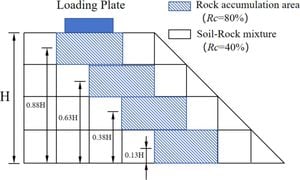Recent research sheds light on the impact of recombinant human growth hormone (rhGH) treatment on the lipid profiles and brown fat activity of children born small for gestational age (SGA). A pilot study involving 11 SGA children suggested significant changes in serum lipid compositions following rhGH therapy, potentially offering new avenues for addressing metabolic disturbances linked to obesity and aging.
Children categorized as SGA often struggle with short stature due to their initial low birth weight and length, affecting their growth patterns well beyond infancy. Traditionally, rhGH has been administered to aid growth among SGA children who exhibit no spontaneous catch-up growth—typically at about four years of age. The therapy, now standard since its approval for this indication, was previously known for its documented benefits on white adipose tissue, enhancing muscle mass and normalizing bone density, but its effects on lipid profiles remained relatively unexplored until now.
Divided between two groups, SGA children under rhGH treatment (n = 7) were compared to untreated SGA children (n = 4) over the course of 12 months. Control data from properly grown children (AGA) were gathered for comparative purposes. Serum lipidomics analysis revealed notable increases in free fatty acids (FFas) after three months of rhGH treatment, with values moving closer to those of AGA peers. These increases, which included polyunsaturated fatty acids, were accompanied by decreased levels of leptin, aligning with previous studies linking FFas with this metabolic hormone.
Elevated levels of markers indicative of aging, such as 1a,1b-dihomo-PGJ2 and adrenic acid, emerged as well, hinting at nuanced interactions between growth hormones and metabolic processes. Interestingly, the commonly observed decrease of meteorin-like (METRNL) protein and monocyte chemoattractant protein-1 (MCP1) to control levels reinforced the idea of rhGH’s regulatory role over inflammatory parameters.
Despite showing significant lipidomic shifts, the study took note of one perplexing finding: rhGH treatment did not significantly impact the thermogenic activity of brown adipose tissue (BAT), which plays a pivotal role not just as a heat producer but also as an endocrine organ influencing overall metabolic health. Participants displayed no observable changes through infrared thermography assessments before and after cold exposure, raising questions about the direct influence of rhGH on BAT.
Study results suggest rhGH’s influence on serum lipid composition is meaningful, urging future research to continue exploring its multifaceted impacts. The authors concluded with caution, noting the need for comprehensive investigations to clarify rhGH's direct effects on specific lipid species and the biological pathways involved.
"By examining both the lipid profiles and potential endocrine activity within these children, we are potentially addressing challenges linked to obesity and aging from early on," stated the authors of the article. They emphasized the importance of this study as it highlights the interplay between growth hormone therapy, adipose tissue metabolism, and the potential for informing treatment strategies for other metabolic disturbances.
The study, published by researchers affiliated with the Germans Trias i Pujol Hospital, serves as the first detailed analysis of rhGH therapy's effects on lipidome and BAT functionality among SGA children. This innovative approach could pave the way for identifying new targets to mediate metabolic complications prevalent within this vulnerable population.



